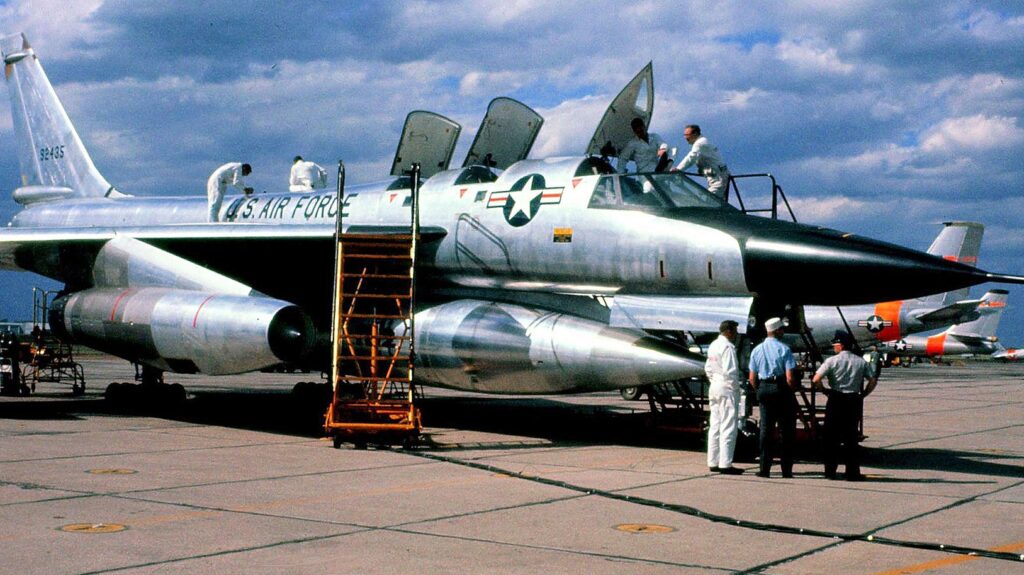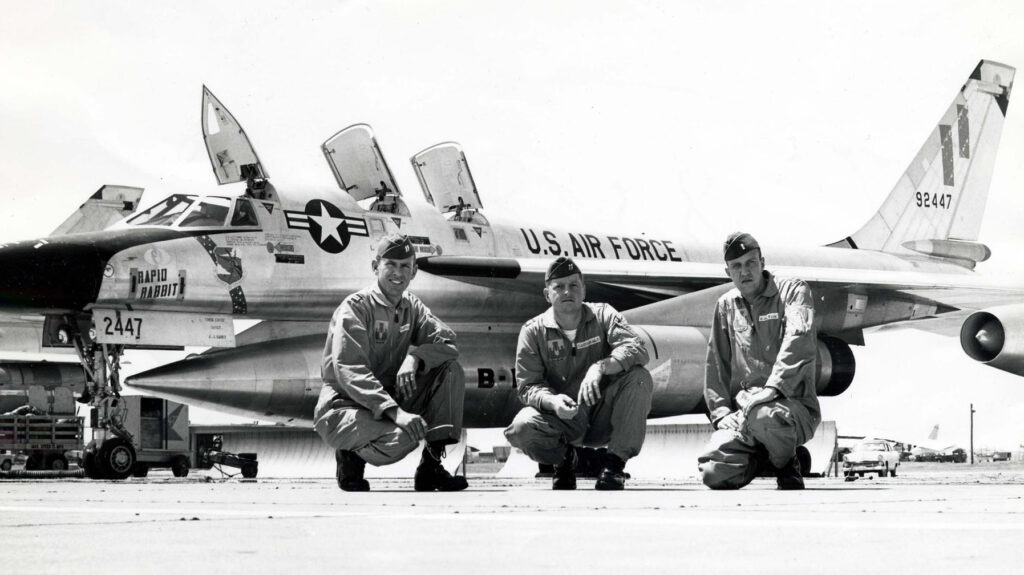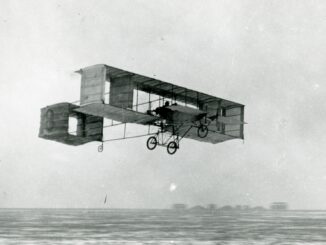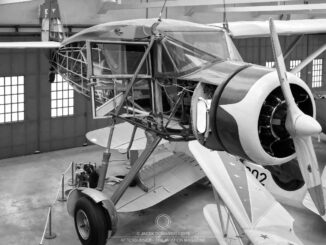 On 11th November 1956, prototype of Convair B-58 Hustler, supersonic strategic bomber, performed its first flight.
On 11th November 1956, prototype of Convair B-58 Hustler, supersonic strategic bomber, performed its first flight.
In February of 1949, less than two years since breaking the sound barrier by Bell X-1 experimental rocket aircraft, the US Air Research and Development Command (ARDC) issued its Generalized Bomber Study (GEBO II). The document indicated the need of developing a long-range, supersonic bomber aeroplane able to operate beyond altitude and speed of enemy fighters.
Although promising in many aspects, the GEBO II was perceived with some reserve. American military authorities, as well as part of industry, regarded the idea as pure fiction. At that time, there was just a little research of the supersonic flights, new materials and technologies had to be developed and there was also a matter of cost-effective operation of such aircraft.
Nevertheless, as the Cold War gained momentum, the military officials finally asked some aviation manufacturers to submit their proposals, in compliance with the GEBO II requirements. It was responded by Boeing, Convair, Curtiss, Douglas, Martin and North American Aviation that took the initiative as an opportunity to expand the boundaries of their technological capabilities while being financed by federal budget. No wonder that most submitted proposals were extremely expensive.
At the turn of 1951 and 1952, two proposals were chosen to proceed further – Boeing MX-1712 and Convair MX-1626. They had to be evaluated within a study called Phase 1, but Convair quickly responded to the latest developments in supersonic flights, such as area rule, as well as technological progress in jet engine design. As a consequence, the company submitted a completely redeveloped concept of supersonic bomber, designated MX-1964 and adopting the abovementioned transonic area rule and powered by brand new General Electric J79 engines. At the same time, Boeing resigned from any further development of their proposal, instead focusing on another programme – the creation of B-52 Stratofortress bomber.
Finally, the Convair company was chosen to create the new supersonic bomber. The contract was concluded on 10th December 1952 and the aircraft was now officially called B-58.

Development and construction of two prototypes was performed in accordance to the highest security standards. Neither the shape nor characteristics of the aircraft were disclosed until the official roll-out that took place in August of 1956.
The final design of the B-58 Hustler included a delta-wing configuration, with 60° sweep of the wing leading edge. The aircraft was powered by four GE J79 turbojet engines and could reach the maximum speed of Mach 2. The Hustler had no internal bomb bay, its main armament could be carried on four external pods located under the fuselage. What´s interesting, not only its cockpit was pressurized and air conditioned, but also the landing gear bay and electronic equipment compartments, in order to avoid high temperatures that appear at supersonic flight.
On 15th March 1960 the first Hustler was delivered to the USAF and on 1st August of the same year, the first unit equipped with the B-58 was announced as combat ready. The new bomber began its operational service as a single-nuclear bomb carrier – due to extremely high fuel consumption, the Hustler usually carried one nuclear load and three additional fuel tanks on its external pods. It was only later four additional pods were added under the wings, allowing to increase the maximum number of carried nuclear bombs to four.
At the time of its development and introduction, the B-58 Hustler was a breakthrough in aircraft design. Although its overall shape seems not revolutionary at all, it was the first aeroplane designed with taking into consideration the aerodynamics and other rules of supersonic flight. The Hustler set several world speed records, including the longest supersonic flight ever made (from Tokyo to London with average speed of 1,510 kph), as well as altitude with 5,000 kg payload record (reaching 26,000 metres).

Regrettably to the USAF, the operational career of the B-58 was relatively short one. The bomber was designed to use its speed and altitude to penetrate the enemy territory, much beyond the range of then existing air defence systems and fighter aircraft. Two British jet bombers from the mid-1950s, Handley Page Victor and Avro Vulcan, were able to fly at an altitude of 36,000 and 45,000 feet, respectively. The Hustler had raised the bar to 63,000 feet. However, introduction of those supersonic, high-altitude bombers into operational service resulted in quite fast reaction of the Soviet Union.
The first Soviet attempts to reach the aforementioned altitudes are dated back to 1955 and introduction of ´Berkut´ (Беркут – English: golden eagle) air defence system. Then, Lavochkin La-250 high-altitude fighter appeared, but that project failed and finally was abandoned in 1959. However, in May of 1957 – just a few months after the maiden flight of the Hustler – new S-75 missile system (NATO reporting name SA-2 Guideline) was disclosed to public.
Although detailed characteristics of the new missile were kept secret, the S-75 shortly proved it meant a completely new quality in the air defence capabilities of the Eastern Bloc countries. In October of 1959 a Taiwanese RB-57D Canberra was hit by an anti-aircraft missile, while flying at 65,600 feet. And next year, on 1st May 1960, a U-2 spy aircraft was shot down over the Soviet territory, despite flying at approximately 70,000 feet altitude (the 1960 U-2 incident).
It meant that the B-58 Hustler lost its main advantages and soon the aircraft was assigned to a new role of a low-level penetration bomber. It was just a swan song, as the aeroplane was not designed to fly in dense air of low altitudes. New conditions required even more aerial refuelling, supersonic speed was hard to achieve and, finally, led to a conclusion that the B-58 was expensive in operation but not effective.
On 29th October of 1969, the US military authorities officially announced that the B-58 fleet will be retired in the end of January next year. The majority of Hustler bombers were then stored for a few years but then scrapped until the end of the 1970s.

Cover photo: B-58 Hustler, probably in 1959 (unknown author, USAF photo via Wikipedia, Public Domain)



